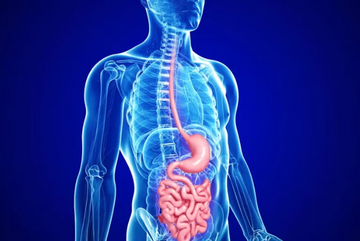GLP-1 Agonists and Weight Loss: Mechanisms, Differences, and Research Insights
GLP-1 receptor agonists are peptides that have become a big focus in weight loss and metabolic health research. These compounds work by mimicking natural hormones in the body that help regulate appetite and how the body processes sugar. Because of this, they’re being closely studied for their potential to help with weight management.
The three popular peptides in this space are Semaglutide, Tirzepatide, and Retatrutide. While they all are similar, each one works a bit differently and targets different hormone pathways.
In this article, we’ll explain what each of these peptides does, how they’re different from each other, and what current research says about how they’re used in studies—including details about dosing, how researchers gradually increase the dose (titration), and what’s known about their effects on both body fat and lean muscle.
This overview is designed to give you a solid understanding of these peptides and the latest research behind them, without getting lost in technical language.
What Are GLP-1 Agonists?
GLP-1 (glucagon-like peptide-1) is a hormone that helps regulate blood sugar and appetite. Synthetic GLP-1 agonists are designed to activate these same pathways.
Semaglutide: How It Works and What Research Shows
-
How Semaglutide Works:
Semaglutide is a peptide that specifically targets the GLP-1 receptor. The GLP-1 receptor is found in the pancreas and the brain, where it plays a key role in controlling appetite and how the body handles sugar. When this receptor is activated, it helps signal to the brain that you feel full, and it also slows down how quickly food leaves the stomach. This means people tend to feel less hungry and eat less overall. At the same time, it helps the pancreas release insulin, which lowers blood sugar after eating. -
Why This Matters:
By mimicking the action of the natural GLP-1 hormone, Semaglutide helps researchers study ways to reduce appetite, improve blood sugar control, and support weight loss—all by working with the body’s own systems. -
Dosing and Titration in Studies:
In research settings, Semaglutide is usually started at a low dose, such as 0.25 mg once per week. The dose is then increased gradually, usually every 4 weeks, to help the body adjust and to reduce stomach-related side effects like nausea. The most common target dose in weight loss studies is up to 2.4 mg per week. This slow, step-by-step increase (called titration) is important for making the treatment easier to tolerate. -
Impact on Lean Mass:
According to research, most of the weight lost with Semaglutide comes from body fat. However, like with most weight loss approaches, some loss of lean muscle can also occur.
Tirzepatide: How It Works and What Research Shows
-
How Tirzepatide Works:
Tirzepatide is a newer peptide that acts on two different hormone receptors in the body: GLP-1 and GIP. Both of these hormones are involved in controlling appetite and how the body manages blood sugar after eating. By activating both receptors, Tirzepatide can signal to the brain that you’re full, slow down how quickly food moves through the stomach, and help the pancreas release more insulin when needed. This combination can lead to reduced hunger and improved blood sugar control. -
Why This Matters:
Because Tirzepatide targets two hormones instead of just one, research suggests it may have a stronger effect on weight loss and blood sugar than GLP-1 agonists alone. This “dual action” approach is what sets it apart from peptides like Semaglutide. -
Dosing and Titration in Studies:
In clinical studies, Tirzepatide is usually started at a low dose, such as 2.5 mg once per week. The dose is then increased in steps—often by 2.5 mg—every 4 weeks. This slow increase helps the body adjust and reduces the chance of side effects, especially stomach upset. The highest dose studied for weight management is 15 mg per week, but not everyone in studies reaches this dose; researchers decide based on how well the participant tolerates each step. -
Impact on Lean Mass:
Research shows that most of the weight lost with Tirzepatide is from fat. However, as with other weight loss methods, some loss of lean muscle can occur. This is why studies often mention the importance of maintaining healthy eating habits and physical activity, especially strength training during weight loss.
Retatrutide: How It Works and What Research Shows
-
How Retatrutide Works:
Retatrutide is the newest of the three peptides and is known as a “triple agonist.” This means it acts on three different hormone receptors in the body: GLP-1, GIP and glucagon. GLP-1 and GIP both play key roles in helping you feel full and in managing blood sugar after eating. The third target, the glucagon receptor, is involved in how the body burns energy and fat. By activating all three pathways at once, Retatrutide is designed to have a combined effect on appetite, blood sugar control and energy use. -
Why This Matters:
Because Retatrutide targets more than one hormone system, early research suggests it may lead to even greater weight loss than peptides that only work on one or two receptors. The triple-action mechanism sets it apart and is a major reason for the growing interest in this peptide in the research community. -
Dosing and Titration in Studies:
In research settings, Retatrutide is usually started at a low dose, such as 1 mg once a week. The dose is increased gradually, often every 4 weeks, moving up in small steps (sometimes doubling the dose) until reaching the higher doses studied—up to 12 mg per week. The gradual increase helps participants tolerate the treatment and reduces the chance of stomach-related side effects. The specific schedule can vary depending on the study, but the slow titration is key. -
Impact on Lean Mass:
Early results from clinical trials show that most of the weight lost with Retatrutide is from body fat. However, as with other peptides, some loss of lean muscle can happen alongside fat loss. Ongoing research is looking more closely at how to best preserve muscle while using this type of peptide for weight management.
Summary
GLP-1 receptor agonists like Semaglutide, Tirzepatide, and Retatrutide are at the forefront of weight loss and metabolic research because of their ability to help regulate appetite and blood sugar. Semaglutide works by mimicking the natural GLP-1 hormone, helping people feel fuller and manage their blood sugar. Tirzepatide takes this a step further by acting on both GLP-1 and GIP receptors, offering a “dual action” approach that may enhance weight loss. Retatrutide is the newest and most advanced, targeting GLP-1, GIP, and glucagon receptors for a “triple action” effect that early research suggests could lead to even greater results.
In research studies, all three peptides are started at low doses and increased gradually, usually every four weeks, to help reduce side effects and improve tolerability. Most of the weight lost in studies is from body fat, though some lean muscle loss can also occur—a common outcome with significant weight loss. Maintaining a healthy diet and regular exercise, especially strength training, is recommended in research settings to help preserve muscle.
These peptides are for research use only and not for human or veterinary use. This summary reflects current scientific understanding and is intended for educational purposes only.
References
- Semaglutide: Wilding JPH, et al. (2021). "Once-Weekly Semaglutide in Adults with Overweight or Obesity." New England Journal of Medicine.
- Tirzepatide: Jastreboff AM, et al. (2022). "Tirzepatide Once Weekly for the Treatment of Obesity." New England Journal of Medicine.
- Retatrutide: Rosenstock J, et al. (2023). "Retatrutide, a Triple Hormone Receptor Agonist, in Adults with Obesity." Lancet.




